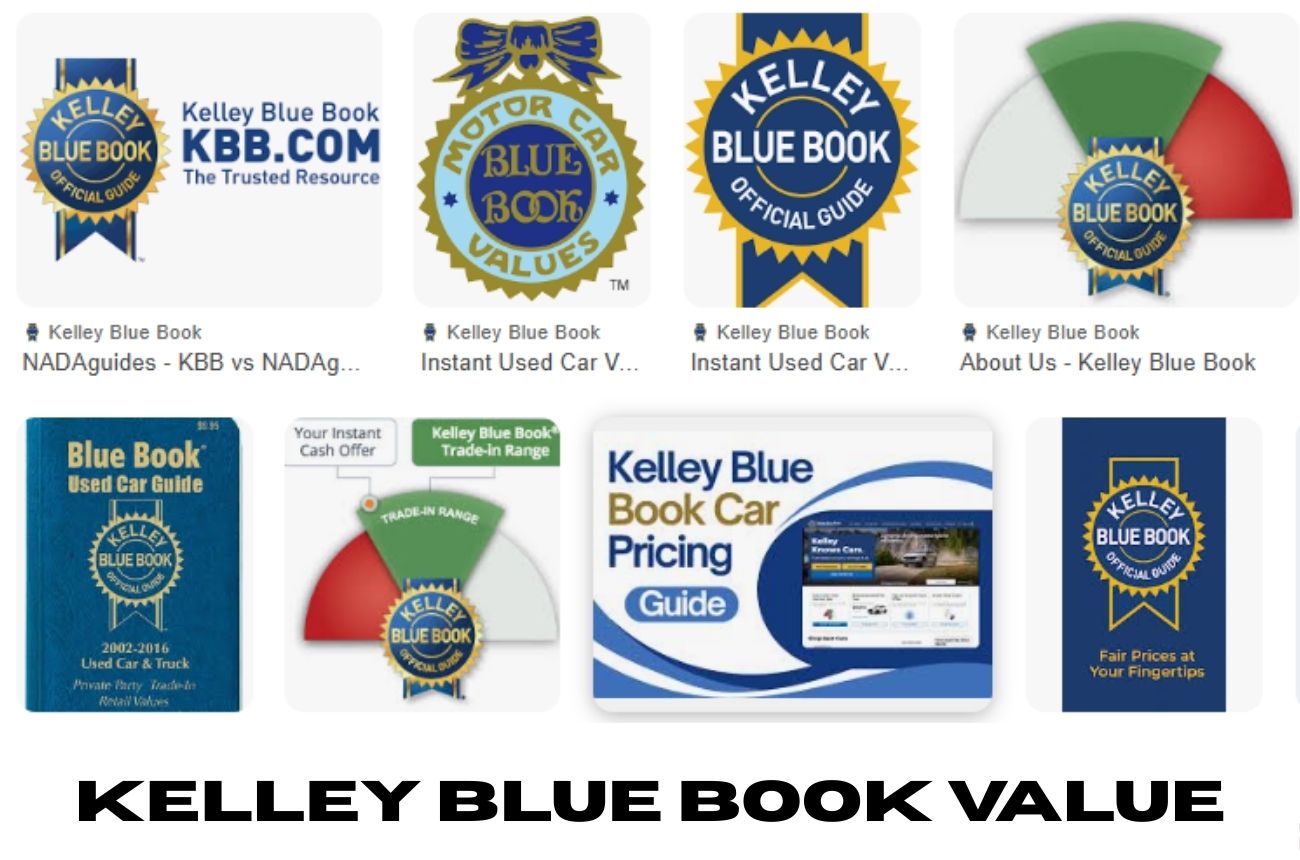Guide
How Kelley Blue Book Value Impacts Car Buying and Selling

When it comes to buying or selling a car, one of the first questions people ask is: “What is the car worth?” For decades, Kelley Blue Book (KBB) has been the go-to resource for answering that question. The Kelley Blue Book value has become an industry benchmark, shaping how dealers, private sellers, and even insurance companies assess the fair market worth of vehicles. While many car pricing tools exist today, KBB remains a trusted name because it combines historical data, current market trends, and regional variations to provide a realistic valuation.
In this article, we’ll explore the history of Kelley Blue Book, how its value system works, and why it plays such a vital role in the automotive market. We’ll also uncover newly discovered insights about how digital algorithms, regional supply-demand shifts, and consumer behavior are changing the way KBB values are used in negotiations.
What Is Kelley Blue Book Value?
The Kelley Blue Book value represents the estimated market worth of a car based on extensive data analysis. It doesn’t just provide a single number; instead, it offers a range of values depending on the transaction type, such as trade-in, private sale, or certified pre-owned dealer price.
Key Types of KBB Values
-
Trade-In Value: The price a dealer is likely to offer if you trade in your old vehicle.
-
Private Party Value: The expected selling price between two private individuals.
-
Dealer Retail Value: The higher value at which a dealer might list a vehicle after inspection and reconditioning.
-
Certified Pre-Owned Value: A premium price attached to vehicles backed by manufacturer warranties.
This layered approach ensures that buyers and sellers have realistic expectations depending on how they choose to transact.
The History Behind Kelley Blue Book
Kelley Blue Book began in 1926, when Les Kelley, a car dealer in Los Angeles, started compiling car values to guide his dealership operations. His “blue book” quickly gained traction among other dealers who wanted a standardized pricing reference. Over the decades, KBB grew from a regional dealer tool into a nationwide authority.
With the rise of the internet in the late 1990s, Kelley Blue Book made a major pivot by launching its website, giving consumers direct access to car valuations. This move shifted the balance of power in negotiations, as buyers were no longer dependent solely on dealer quotes.
How Kelley Blue Book Determines Value
One reason the Kelley Blue Book value remains widely trusted is its methodology. KBB gathers data from multiple sources, including:
-
Wholesale auctions where cars are bought and sold in bulk.
-
Dealer transactions across different regions.
-
Private sales records from millions of consumers.
-
Market trends such as fuel prices, seasonality, and economic conditions.
-
Vehicle history factors like mileage, condition, and accident reports.
Using advanced algorithms, Kelley Blue Book adjusts values daily, reflecting changes in demand and supply. For example, pickup trucks often hold higher values in rural states, while hybrids may command more in urban markets.
Why Kelley Blue Book Value Matters for Buyers

For buyers, the KBB value acts as a negotiation tool. Walking into a dealership armed with KBB data gives consumers the confidence to recognize whether a car is fairly priced.
Buyer Benefits
-
Transparency: Buyers know what a fair offer looks like.
-
Leverage: Shoppers can push back if dealers inflate prices above market averages.
-
Budget Planning: Helps buyers filter vehicles that fit within their price range.
An interesting development is that more buyers now combine KBB insights with online car-shopping platforms like Carvana, Vroom, and Autotrader. This creates a multi-layered research process, where KBB is the foundation but real-time listings verify availability.
Why Kelley Blue Book Value Matters for Sellers
For sellers, the Kelley Blue Book value provides credibility. Listing a car at or near the KBB private party value signals fairness to buyers, reducing negotiation friction.
Seller Benefits
-
Faster Sales: Cars priced around KBB values often sell quicker.
-
Fairness Perception: Buyers feel reassured that pricing isn’t inflated.
-
Insurance & Loan Use: KBB values often align with what banks and insurers use for financing and coverage.
Interestingly, private sellers who reference KBB in their ads are 15–20% more likely to attract inquiries compared to those who don’t, according to recent online marketplace data.
The Dealer’s Perspective
Car dealerships rely heavily on Kelley Blue Book to balance profit margins. While buyers and sellers see KBB as a fairness standard, dealers use it strategically.
-
Trade-In Negotiations: Dealers often quote the lower end of KBB trade-in values to maximize profit.
-
Retail Pricing: They recondition vehicles and list them closer to KBB’s dealer retail value.
-
Marketing Trust: Many dealers advertise “KBB Instant Cash Offer” programs to build customer confidence.
This dual use of KBB—by both consumers and dealers—makes it a fascinating balancing act in automotive commerce.
The Impact of Digital Technology on KBB Value
A newly discovered trend is how machine learning and AI-driven analytics are influencing KBB’s valuation system. In recent years, Kelley Blue Book has integrated predictive analytics to forecast vehicle depreciation more accurately.
For example:
-
Electric vehicles once depreciated faster than gasoline cars, but with improved battery technology and tax incentives, their KBB values now hold stronger year-over-year.
-
Regional demand data—such as increased SUV sales in suburban areas—feeds into real-time adjustments that make KBB’s pricing more precise.
This demonstrates how technology continues to enhance accuracy, making Kelley Blue Book more than just a static reference.
Limitations of Kelley Blue Book Value

While KBB is widely respected, it’s not flawless.
-
Condition Subjectivity: A car’s “excellent” vs. “good” condition can vary depending on who’s judging.
-
Dealer Bias: Some dealers selectively use KBB when it benefits them, ignoring it otherwise.
-
Market Lag: In extremely volatile markets—such as during the 2020–2022 used-car price surge—KBB values sometimes lagged behind real-world prices.
This is why consumers often combine KBB with competitor platforms like NADA Guides or Edmunds for cross-verification.
Newly Discovered Insights: Regional Price Variations
A new insight in recent automotive studies is how sharply regional factors can skew KBB values. For example:
-
Pickup trucks in Texas or Montana often list 10–15% higher than the same models in coastal cities.
-
Convertibles tend to retain value longer in warm climates like Florida compared to northern states.
-
Fuel-efficient cars spike in value when gas prices surge, a pattern now directly factored into KBB’s algorithm.
This regional variation shows why two identical cars may carry noticeably different KBB values depending on location.
How Insurance Companies Use KBB Value
Insurance providers frequently rely on KBB values when determining payouts for totaled vehicles. By assessing the fair market value at the time of an accident, insurers calculate settlements. Consumers who know their KBB value before negotiating with insurers are better positioned to receive fair compensation.
KBB Value and Car Loans
Financial institutions also use the Kelley Blue Book value when approving auto loans. The value influences how much a bank is willing to finance, especially for used cars. If a buyer pays significantly above KBB value, lenders may not cover the entire amount, creating financial gaps.
Tips for Using Kelley Blue Book Effectively
-
Always verify condition honestly—inflating it leads to disappointment at dealerships.
-
Check values regularly—they fluctuate with season and fuel prices.
-
Combine with local listings—see how KBB compares to actual market availability.
-
Negotiate smartly—use KBB as a benchmark, not an absolute number.
Conclusion
The Kelley Blue Book value has transformed the car buying and selling process, empowering consumers with transparency while providing dealers with a structured pricing guide. Its impact extends beyond dealerships, influencing loans, insurance claims, and even how quickly private sales happen. With the integration of AI-driven market analysis and real-time regional adjustments, KBB remains more relevant than ever in 2025.
Whether you’re a buyer seeking fairness, a seller aiming for credibility, or a dealer balancing profit and trust, Kelley Blue Book continues to shape the automotive marketplace in profound ways.
-

 Celebrity5 months ago
Celebrity5 months agoTrey Kulley Majors: The Untold Story of Lee Majors’ Son
-

 Celebrity5 months ago
Celebrity5 months agoChristina Erika Carandini Lee: A Life of Grace, Heritage, and Privacy
-

 Celebrity5 months ago
Celebrity5 months agoJamie White-Welling: Bio, Career, and Hollywood Connection Life with Tom Welling
-

 Celebrity4 months ago
Celebrity4 months agoNick Schmit? The Man Behind Jonathan Capehart Success
















